Blog
Revealing the Impact of Aneusomy in Cancer
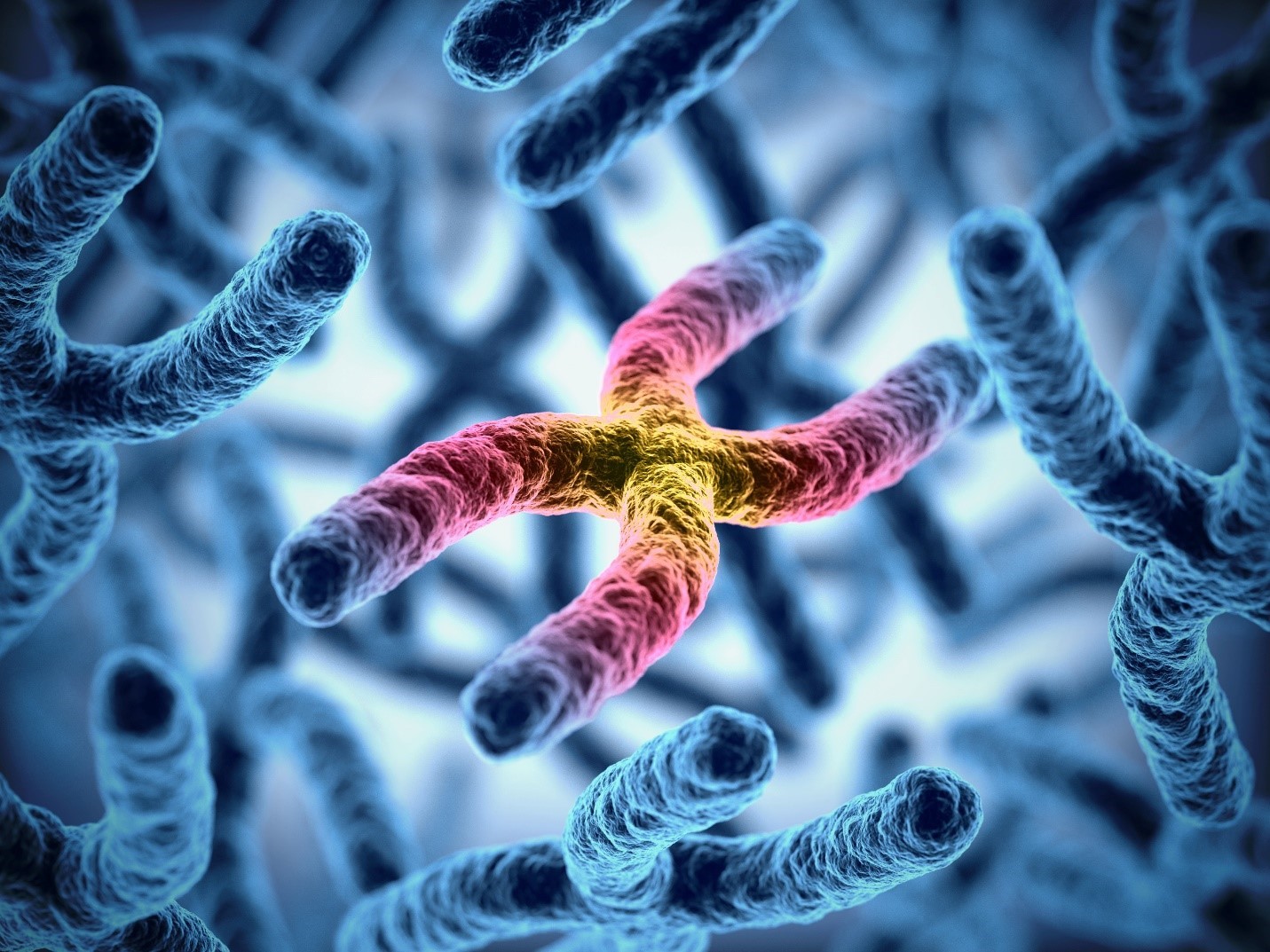
The impact of aneusomy on cancer is multifaceted and significant. Aneusomy, characterized by abnormal number of chromosomes within cells, plays a crucial role in the development and progression of various types of cancer1. Some of the key aspects of aneuploidy impact on cancers are:
- Tumorigenesis: Aneusomy is often associated with the initiation of tumorigenesis. Whole chromosome or chromosome-arm imbalances are present in nearly 90% of cancers2. Abnormalities in chromosome numbers can lead to genomic instability, which is a hallmark of cancer. This instability promotes the accumulation of mutations in critical genes involved in cell cycle regulation, DNA repair, and tumor suppression, ultimately contributing to the transformation of normal cells into cancerous ones.
- Tumor Progression: Once initiated, aneusomy can fuel tumor progression by providing a favorable environment for the growth and survival of cancer cells. Aneuploid cells often exhibit increased proliferative capacity, resistance to apoptosis (programmed cell death), and enhanced invasive potential, which are essential features of aggressive cancer phenotypes.
- Heterogeneity: Aneusomy contributes to intratumor heterogeneity, where cancer cells within the same tumor exhibit diverse genetic and phenotypic characteristics. This heterogeneity arises from ongoing chromosomal instability and clonal evolution, leading to subpopulations of cells with distinct karyotypes and biological behaviors. It poses challenges for cancer treatment by promoting the emergence of drug-resistant clones and complicating therapeutic strategies.
- Prognosis and Treatment Response: The presence of aneusomy in cancer cells is often associated with poor prognosis and reduced treatment response. Tumors with high levels of chromosomal instability and aneuploidy tend to be more aggressive, metastatic, and resistant to conventional therapies such as chemotherapy and radiation. Improving clinical research to better understand aneuploidy associated with cancer can help predict treatment outcomes and guide future personalized therapeutic interventions.
Accurate and sensitive identification of aneuploidy is paramount for comprehensively characterizing and elucidating the evolution of hematological malignancies. Utilizing Optical Genome Mapping (OGM) with VIA software offers an innovative method to attain unparalleled sensitivity to detect aneuploid genomes. This capability serves as a valuable tool for clinical researchers seeking novel therapeutic modalities and refining precision medicine strategies as3:
- Genomic instability, including whole-chromosome aneuploidy, is a hallmark of cancer
- Aneuploidy is a highly attractive target in cancer therapy
- Therapeutics could either target specific recurring aneuploidy associated with certain cancers or the cell pathways generally relied upon by aneuploid cells
Experience the cutting-edge capabilities of the latest VIA™ software, revolutionizing the detection of disease-related numerical chromosomal anomalies within the OGM data analysis workflow. Our groundbreaking aneusomy caller establishes precise copy number estimates for each chromosome and chromosome arm, enabling the sensitive detection of aneusomies down to 5% variant allele fraction (VAF), equivalent to 10% aberrant cell fraction (ACF). Analyze OGM data with VIA software for a streamlined and effective solution tailored to hematological malignancies, offering unparalleled sensitivity and precision across all classes of numerical and structural variants.
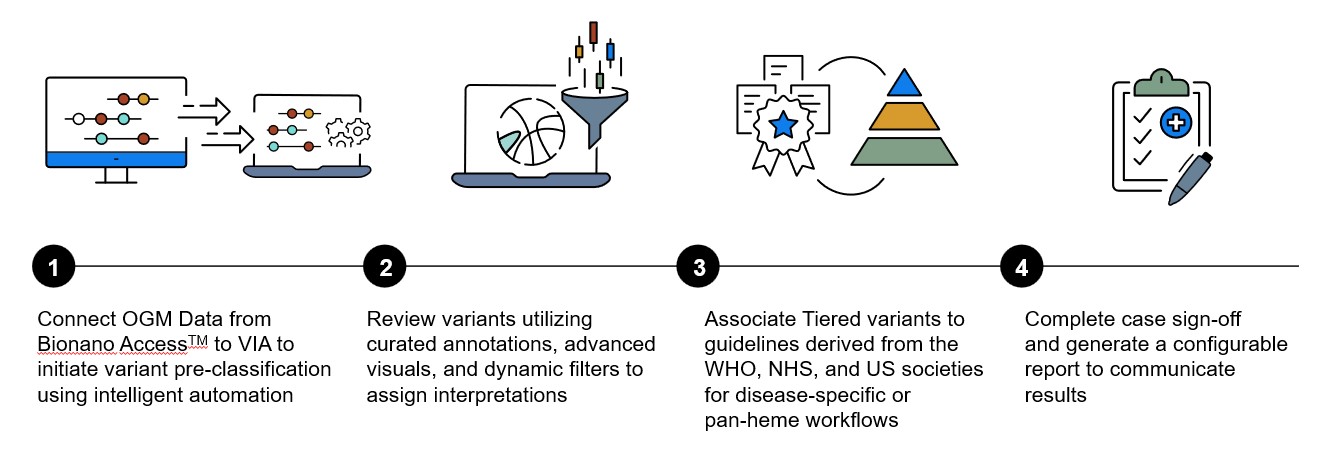
Here’s how it works: Identifying aneusomy from OGM data has long been possible, but the sensitivity and precision of calling whole chromosome aberrations varied by chromosome and situation. VIA’s aneusomy caller leverages the Multi-Scale Reference (MSR) methodology to generate an expected coverage profile of a control dataset for an in silico comparison to the sample data. This enables a sensitive measurement of coverage differences across each chromosome and chromosome arm, facilitating automated detection of aneusomies with confidence scores supporting each call. Even from cytogenetically complex samples, detecting aneusomies has never been easier.
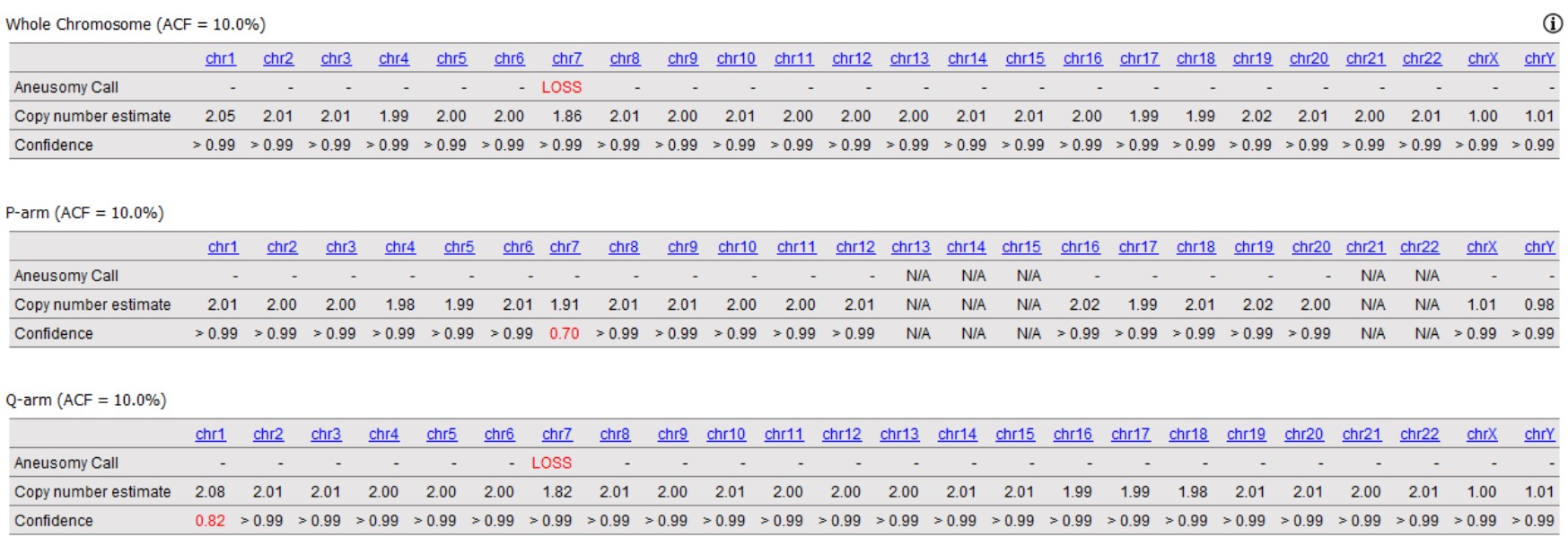
Integrated seamlessly into the OGM data analysis workflow, aneusomy calling in VIA software allows you to visualize, interpret, and report genomic variants indicative of disease. Explore multiple powerful visualizations of OGM data, reinforcing objective measurements of whole chromosome copy number with comprehensive visual displays in the whole genome plot. Seamlessly transition between aneusomy calculations and visual data displays for enhanced context, potentially identifying even the most subtle aneusomy events, including those below 5% VAF.
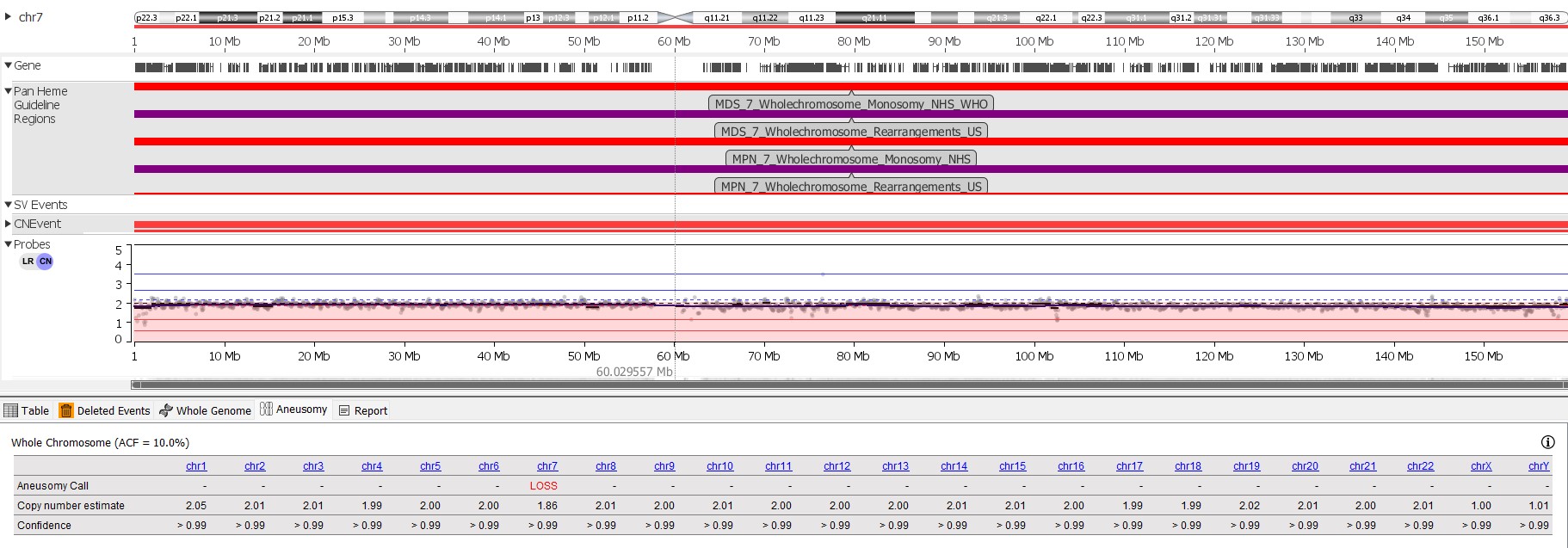
The analysis workflow in VIA software captures aneusomy calls into sample events tables and reports, supplemented by numerous tools aiding interpretation of segmental CNVs. In just a couple clicks, the high confident aneusomy calls are integrated with all sample variants and importantly VIA automatically rectifies any overlap with called CNVs to ensure the consistency of integrity of the sample’s results as well as the database. In addition, intelligent automation streamlines the interpretation of aneusomies by setting the tier classification and providing appropriate ISCN designation. Visualize aneusomy calls within the Ideogram and Circos plot, interpreting their significance in combination with other structural variants culminating into a complete cytogenomic evaluation and sample report.
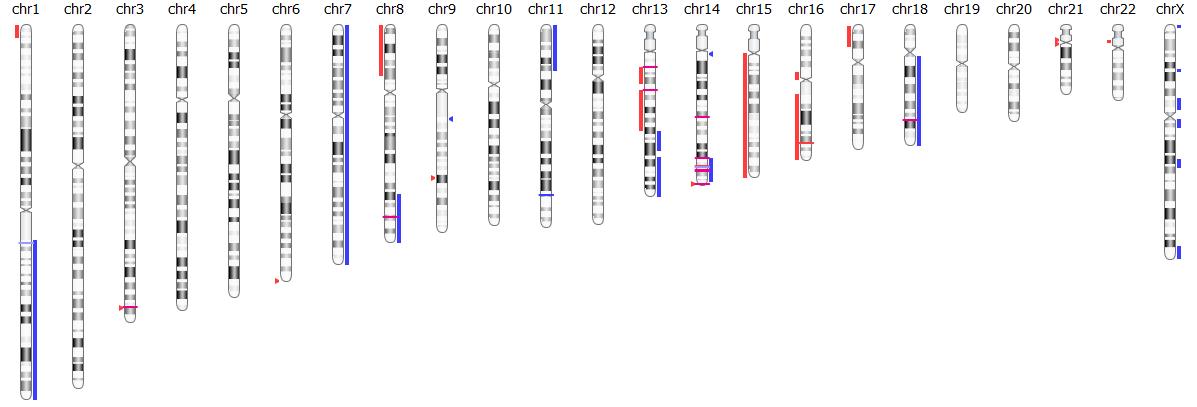

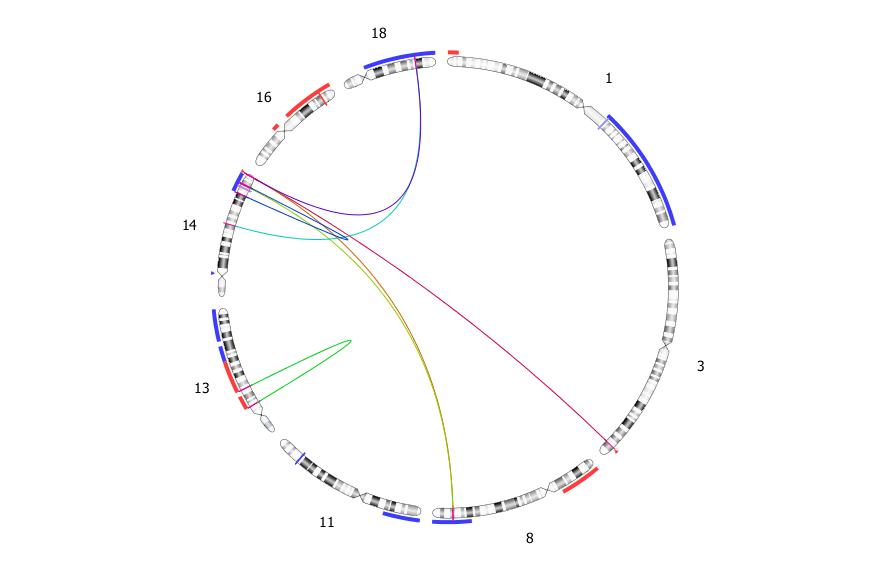
VIA software simplifies your sample-to-report workflow, empowering you to deliver disease-relevant answers faster. Enhanced detection of low-percent mosaic aneusomy eliminates reliance on manual visual assessment, ensuring critical genomic alterations are confidently identified and included in the analysis workflow. Bring VIA software into your laboratory today to leverage the new aneusomy caller and unlock its full functionality for enhanced visualization, interpretation, and reporting of genomic data.
- Mitelman F. Recurrent chromosome aberrations in cancer. Mutation Research/Reviews in mutation research. 2000 Apr 1;462(2-3):247-53.
- Taylor AM, Shih J, Ha G, Gao GF, Zhang X, Berger AC, Schumacher SE, Wang C, Hu H, Liu J, Lazar AJ. Genomic and functional approaches to understanding cancer aneuploidy. Cancer cell. 2018 Apr 9;33(4):676-89.
- Vargas-Rondón N, Villegas VE, Rondón-Lagos M. The role of chromosomal instability in cancer and therapeutic responses. Cancers. 2017 Dec 28;10(1):4.



